If we asked you where St. Peter or St. James the Greater are buried, perhaps you would have no difficulty in answering: the former rests in the greatest temple of Christendom in Rome, the latter in the basilica of Santiago de Compostela in Spain. But what if we asked you what places are consecrated to St. Thomas, St. Andrew, St. Philip--in short, to all the other apostles? Perhaps you would not expect to learn that they are almost all located in Italy. Of course, a necessary premise must be made: the stories associated with these places of worship are almost always lost in legend, and it is virtually impossible to have any claim to historical truth about where the remains of saints who lived so far back in time are actually preserved. Just think of the case of the relics of St. Bartholomew, which are still disputed today between the basilica of St. Bartholomew on the Island, located in Rome, and the basilica of St. Bartholomew the Apostle in Benevento (and to complicate matters further, there is the fact that Frankfurt Cathedral also claims to have the relic of Bartholomew’s head). The list below, therefore, identifies where the saints are buried according to tradition, thus becoming destinations for the faithful. The saints are listed according to the time of their call: according to the Gospels’ account, there are few differences (we have relied on the arrangement handed down from Luke’s Gospel).
1. St. Peter’s - Rome, St. Peter’s Basilica in the Vatican.
The burial place of the disciple whom Jesus pointed to as the teacher of the other apostles and the “stone” on which the Church would be founded, as is well known, is St. Peter’s Basilica in the Vatican in Rome, the main temple of Christianity. The basilica is built on what Christian tradition identifies as the burial place of St. Peter (the apostle allegedly suffered martyrdom under Emperor Nero, crucified upside down at his own behest), although not everyone agrees with this version of the legend. It is not, on the other hand, a legend that the present temple is a work built beginning in 1506 under the pontificate of Julius II and protracted for decades (it was completed in 1626, the year of its consecration under Urban VIII) and that it houses extraordinary works of art, beginning with Michelangelo’s Pieta. What is instead identified as the tomb of the first pope is located in the Vatican Grottoes.
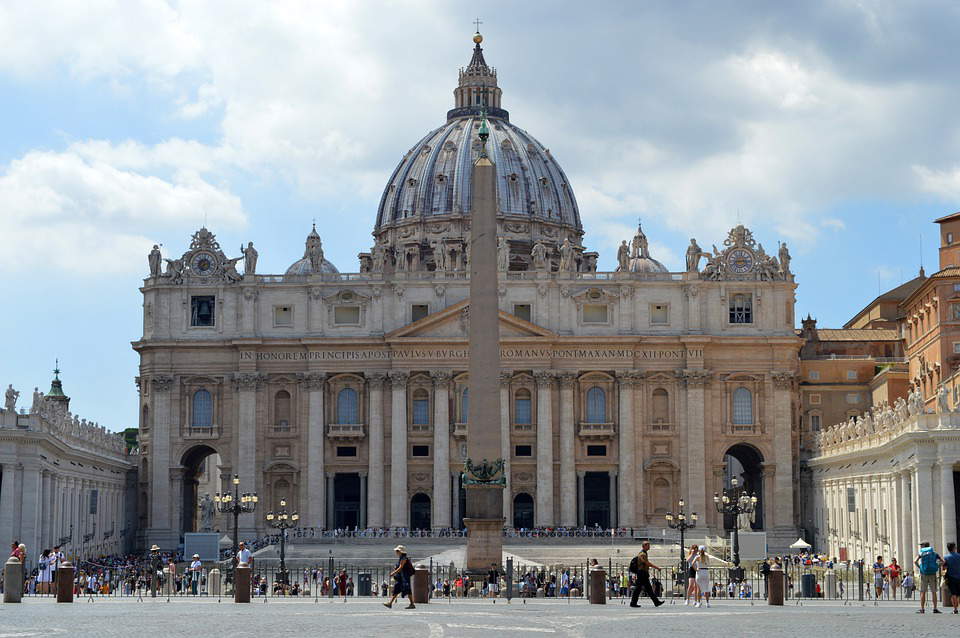 |
| St. Peter’s Basilica in the Vatican |
2. St. Andrew’s - Patras, Basilica of St. Andrew’s.
The so-called protocletos, or “called first” (St. Andrew and Peter, his brother, were in fact, together, the first apostles called by Christ), according to tradition suffered martyrdom also under Nero, a few years before Peter, and also by crucifixion (on the very famous decussate cross, i.e., X-shaped, for this reason also known as “St. Andrew’s cross”). St. Andrew suffered martyrdom in Patras, Greece: it is here that the basilica of St. Andrew is located, built between 1908 and 1974 in the Neo-Byzantine style, and which has become a pilgrimage destination for the faithful who come to the city, the third largest in Greece after Athens and Thessaloniki and the first in the Peloponnese, from all over the world every year. The history of the relics of St. Andrew is particularly tribulated: the skull was brought to Patras in 1964 from Rome, in the same year the jawbone, until then kept in Pienza, was also sent to Patras, while portions of the cross arrived in 1980, but other relics are found scattered in different parts of the world (one hand, for example, is reportedly kept in the Cathedral of Sarzana, a city whose patron saint is St. Andrew himself).
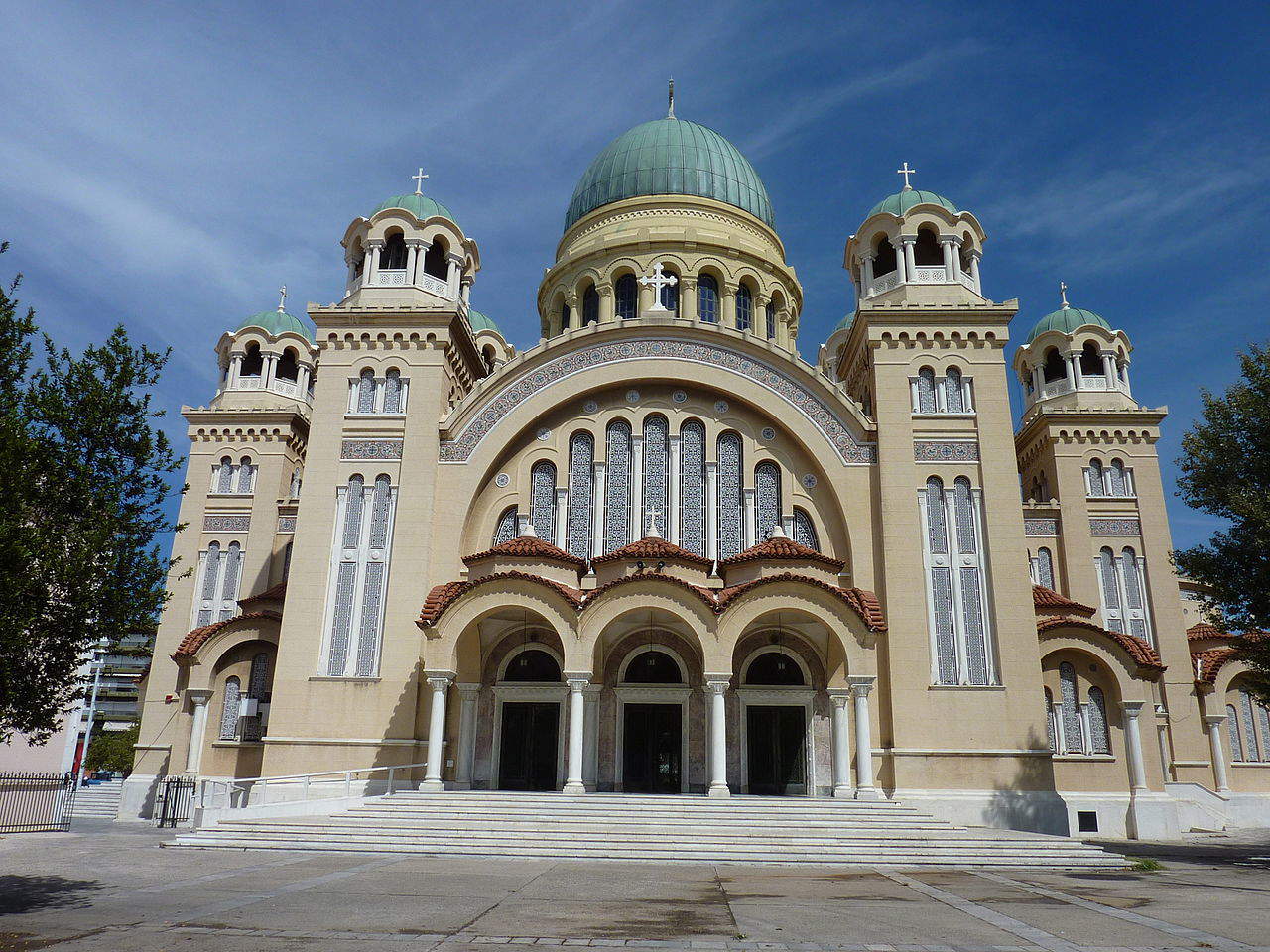 |
| The Basilica of St. Andrew in Patras. |
3. James the Greater - Santiago de Compostela, Basilica of St. James of Compostela.
After St. Peter’s Basilica is perhaps the most famous temple dedicated to an apostle: according to legend, after his martyrdom suffered by beheading and occurring in Jerusalem under the reign of Herod Agrippa (so says the Acts of the Apostles), the body of James of Zebedee (called “Major” to distinguish him from the other James the apostle of Jesus) was allegedly taken by the disciples to Galicia, and his remains discovered by a miracle in the 9th century following the vision of a star (hence the place name Compostela, from campus stellae, “field of the star”). A first church was therefore built at the end of the century, but the present temple dates from a later period: construction began in the 11th century and the building, in Romanesque-Gothic style, was consecrated in 1211. In contrast, the façade characterized by exuberant decorative richness, known as the fachada do Obradoiro, is 18th-century and was built between 1738 and 1750 to a design by architect Fernando de Casas. Inside the basilica, which for centuries has been the arrival point of the Way of St. James (the pilgrimage people make to go and revere the saint), numerous works of art are preserved: among them are the sepulchres of royalty, many dating from the 12th and 13th centuries, and the twelve tapestries by Francisco Goya (Santiago Cathedral boasts a sizeable tapestry collection).
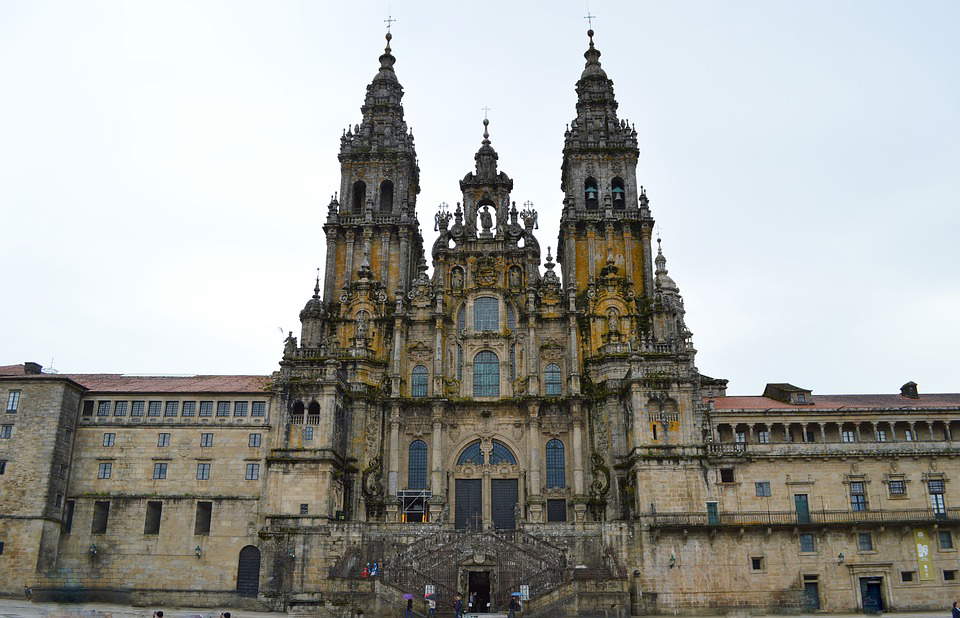 |
| The Basilica of St. James of Compostela |
4. John - Ephesus, Basilica of St. John (in ruins).
According to Christian tradition, St. John, apostle and evangelist, was the only one of the twelve to die of natural causes: his demise is traced to the years of Emperor Trajan and is said to have occurred in Ephesus, Asia Minor. Here, in the 4th century, a first temple dedicated to him was built, which was already in a state of neglect two hundred years later. Thus, in the 6th century, Emperor Justinian had a new, imposing basilica dedicated to the saint built: of the building, however, nothing remains today but ruins (in fact, the site was completely abandoned after the city fell to the Turks), and the youngest of Jesus’ apostles today has no pilgrimage destination (on the contrary, in the past Ephesus, at least until the Ottoman conquest, was a destination for frequent travels of the faithful).
 |
| The Basilica of St. John in Ephesus. Ph. Credit |
5. Philip - Hierapolis, Martyrion of St. Philip
St. Philip is said to have conducted his preaching work in Hierapolis, Phrygia, a place where he also suffered martyrdom, also by crucifixion (tradition, however, has him nailed to a tree, not a cross). The ancient city, now one of the most visited archaeological sites in Turkey, saw the presence of a martyrion (i.e., a Byzantine basilica dedicated to a martyr) of St. Philip: the ruins of the building were discovered in 2011 by a team of archaeologists from the University of Lecce, who on the basis of inscriptions found at the site found what was once believed to be the tomb of St. Philip. He, too, therefore has no place that is a pilgrimage destination, lacking a still-consecrated and working building of worship.
 |
| The Martyrion of Saint Philip. Ph. Credit Herbert Weber |
6. Bartholomew - Benevento, Basilica of St. Bartholomew
Legend has it that the relics of St. Bartholomew, who suffered martyrdom by being skinned alive in an unspecified place in the Middle East, appeared in the 6th century in Lipari and somehow would have come to Benevento, where they are attested some three hundred years later. In 983, Emperor Otto II of Saxony reportedly asked the Benevento people for the saint’s relics, but the city’s inhabitants allegedly fobbed him off with fake relics, later placed in the basilica of St. Bartholomew on the Island in Rome. What really happened, however, is not well understood, so much so that even today the saint’s relics are disputed between Benevento and Rome. The Benevento church, built between 1726 and 1729 on the site of earlier churches destroyed on several occasions by earthquakes, has the oldest origins, since the first building was constructed in the 9th century.
 |
| The Basilica of St. Bartholomew in Benevento. Ph. Credit |
7. Matthew - Salerno, Cathedral
The origins of the cult of St. Matthew are also lost in legend: the holy apostle and evangelist is said to have suffered martyrdom in Ethiopia, killed by a hitman while celebrating a mass. The relics are said to have somehow reached Lucania in the fifth century: found after a few centuries by a monk named Athanasius, news of them was lost again until 954, when the relics were again found, again in Lucania, and then transported to Salerno, where they are preserved today. To be precise, the saint’s remains are located in the crypt of the Cathedral, built starting in the 11th century and then extensively remodeled in the following centuries. Every year, Salerno Cathedral is the scene of celebrations in honor of the saint, who is also the patron saint of the Campania city. Not everyone knows that the evangelist also has his own path: it is the Way of St. Matthew, which unravels along the Cilento coast and follows the route that, according to tradition, his relics took after they were found in Lucania and transferred to Salerno.
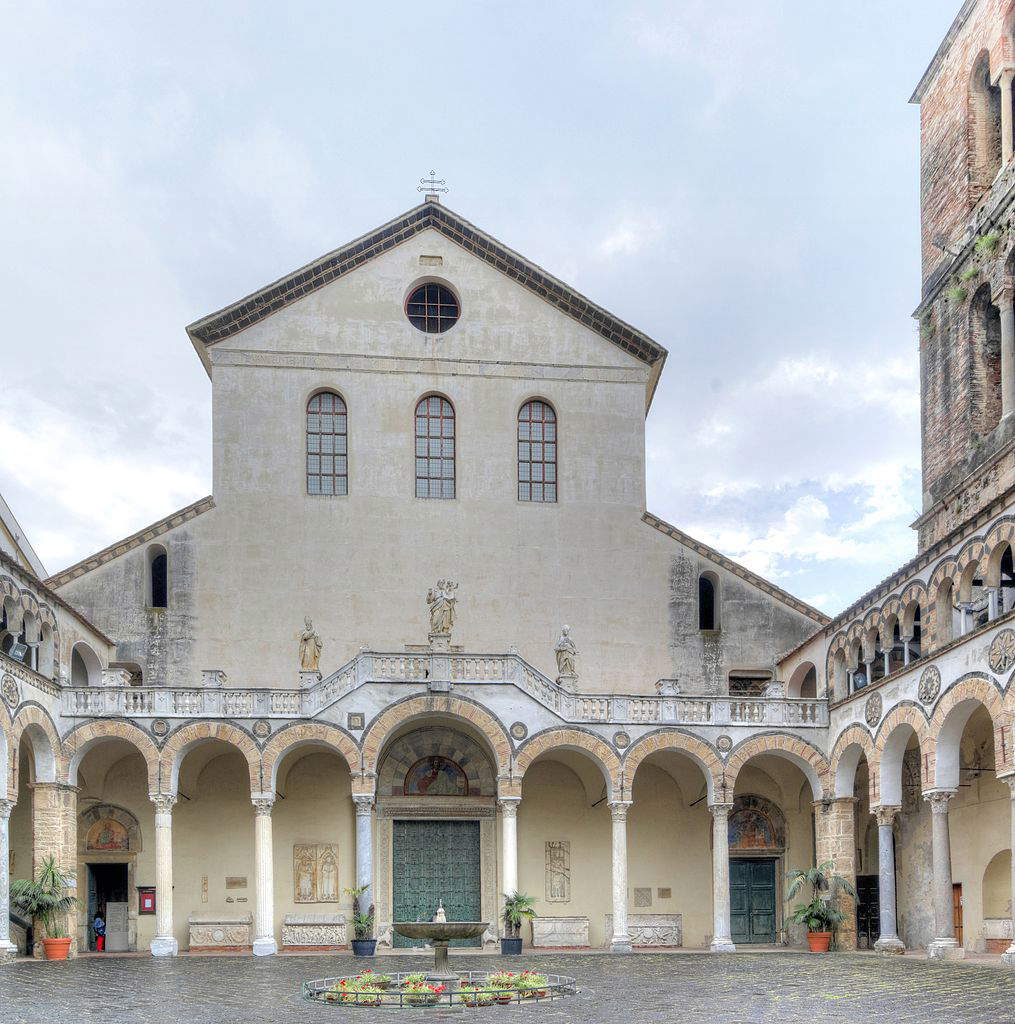 |
| Salerno Cathedral. Ph. Credit Berthold Werner |
8. Thomas - Ortona, Basilica of St. Thomas the Apostle
St. Thomas, the apostle known for not believing in the resurrection of Jesus and wanting tangible proof of it, according to tradition rests in the Basilica of St. Thomas the Apostle in Ortona, Abruzzo, a temple built in the 12th century but entirely rebuilt in the 20th century after damage during World War II. The saint is said to have been killed in the course of his preaching in India, and from the time of his martyrdom onward, legends vary: the “Ortonese” one has it that the relics were stolen by some inhabitants of the Abruzzese city in 1258, from the Greek island of Chios where they were located at the time, but there are also stories that have some relics of St. Thomas preserved in Chennai, India, where there is moreover another Christian basilica dedicated to St. Thomas that contends with the one in Ortona as the apostle’s shrine of reference.
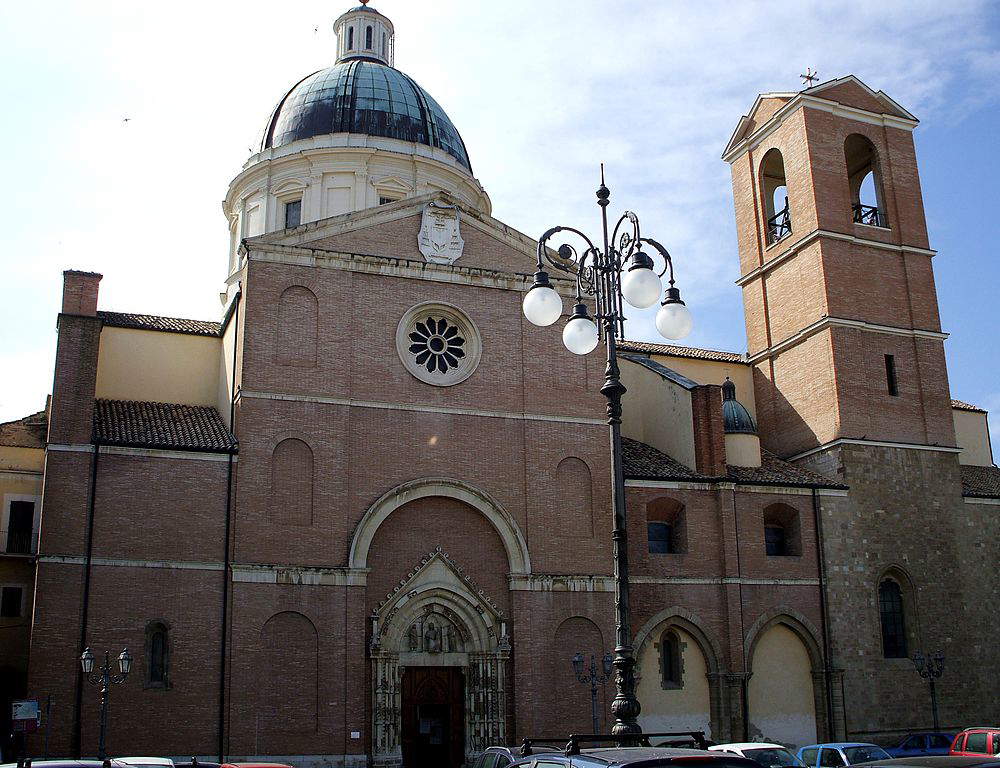 |
| The Basilica of St. Thomas the Apostle in Ortona. |
9. James the Lesser - Rome, Basilica of the Holy Apostles
That of James of Alphaeus, known as James the Lesser to distinguish him from the Saint James venerated in Santiago de Compostela, is another of the cases of disputed relics. Indeed, Catholic tradition has him buried in the Basilica of the Holy Apostles in Rome, while according to the tradition of the Armenian Apostolic Church, the saint’s body rests in the Cathedral of St. James in Jerusalem. Moreover, Catholic tradition has it that in the Roman basilica, in addition to the remains of James the Lesser, there are also some relics of St. Philip. The Basilica of the Holy Apostles, one of the most beautiful churches in Rome, is distinguished by its long 15th-century portico that precedes the neoclassical facade designed by Giuseppe Valadier. Inside the building you can find works by great artists such as Antonio Canova, Antoniazzo Romano, Giovanni Battista Gaulli, and Sebastiano Ricci.
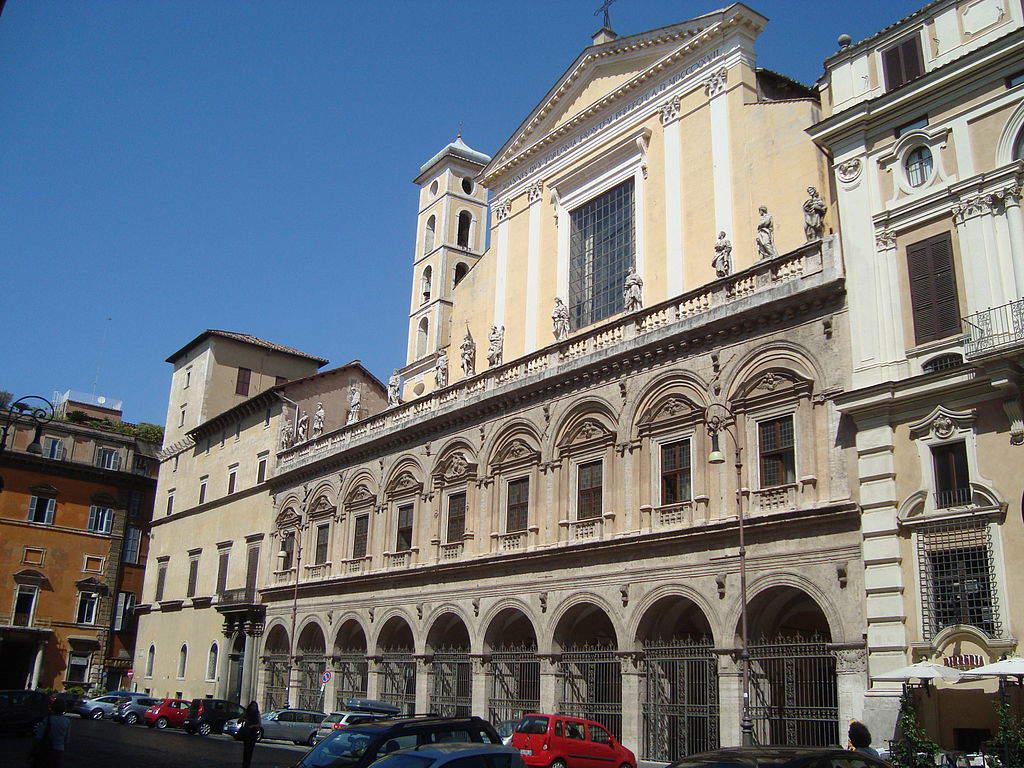 |
| The Basilica of the Holy Apostles in Rome. Ph. Credit |
10. and 11. Simon the Canaanite and Judas Thaddeus - Rome, St. Peter’s Basilica
According to legends, the two saints allegedly met, some time apart, in Persia, where they conducted their evangelization work together. They were both martyred by stoning (and Judas Thaddeus would have been finished off with an axe or spear, later to become his iconographic attribute) and their relics would be preserved in St. Peter’s Basilica in Rome. However, there are also those who say that some fragments of their bodies would have been taken by a Franciscan friar from Larciano, named Jacopo, who in 1438 was in Venice, where the remains of the two apostles are attested at the time: the friar would have brought them to the city and according to tradition today they are in the church of Sant’Agostino in the Abruzzi city.
 |
| St. Peter’s Basilica in the Vatican |
12. Matthias - Padua, Basilica of Santa Giustina
As is well known, Matthias was the last of the apostles to be called, specifically he was summoned to “replace” Judas Iscariot guilty of betraying Jesus. However, he is also the apostle about whom tradition is most confused: beyond the episode of his calling (which he received following an assembly of the other eleven), little is known about him. It appears that he was martyred by stoning in Jerusalem, and that his relics would have been transported to Rome by Empress Saint Helena. Some of these relics would later be taken to the Abbey of St. Justina in Padua, where they remain to this day (but others would instead be kept in the Abbey of St. Matthias in Trier, Germany).
 |
| The Basilica of St. Justina in Padua. Ph. Credit Didier Descouens |
Warning: the translation into English of the original Italian article was created using automatic tools. We undertake to review all articles, but we do not guarantee the total absence of inaccuracies in the translation due to the program. You can find the original by clicking on the ITA button. If you find any mistake,please contact us.